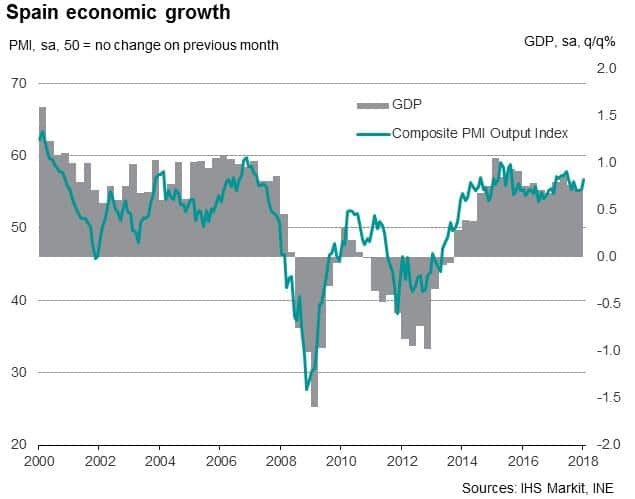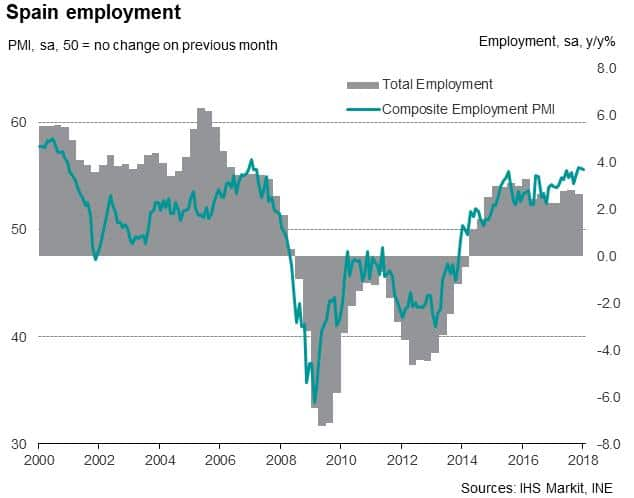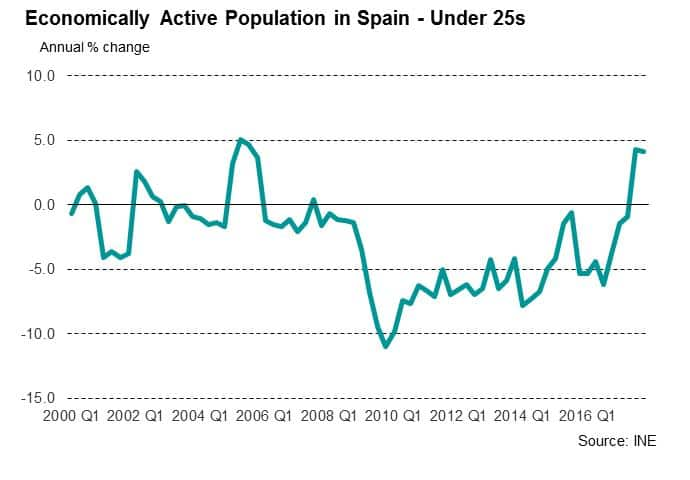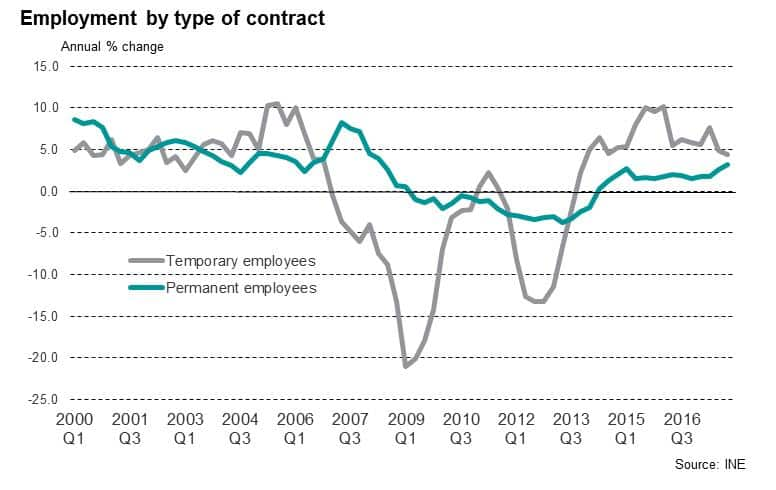Spain PMI shows strong start to 2018, boding well for further solid GDP growth
- PMI at six-month high in January
- GDP up 0.7% in Q4, in line with PMI findings
- Rising workloads support further job creation
The Spanish economy made a strong start to 2018, raising hopes that the recent solid expansion of the economy will continue as the year progresses. The upturn should also lead to further improvements in job prospects for Spanish workers, making the expansion more self-sustaining.
IHS Markit PMI data for January signalled a sharp monthly rise in output across the combined manufacturing and service sectors of Spain. The rate of expansion accelerated to a six-month high, contributing to a flying start to 2018 for the wider euro area economy.
GDP rises solidly at end of 2017
In recent years the Spanish PMI data have anticipated official GDP data extremely well. This continued in the final quarter of 2017, as quarterly GDP growth came in at 0.7% and precisely in line with the advance signal provided by the PMI. This represented a slight slowdown in the rate of expansion, but still signalled an impressively solid performance.

Anecdotal evidence from the PMI surveys suggested that the slowdown in growth late last year was linked to uncertainty surrounding the political situation in Catalonia. The Composite PMI dipped to a nine-month low in October around the time that the Catalan Parliament declared independence. Since then, however, the potential for immediate political disruption has faded, with growth accelerating in each of the following three months.
If the recent improving PMI trend continues in the next two months, then the first quarter could see GDP growth pick-up from that seen at the end of 2017. This may then lead forecasters to raise their predictions for 2018 GDP, which so far anticipate a slowdown in growth from the 3.1% increase seen in 2017.
Job creation continues
Rising workloads continued to support increases in employment at the start of 2018, according to the PMI data. The rate of expansion remained marked in January and was broadly in line with the pace seen during Q4. Latest official labour market data likewise signalled a further healthy annual increase in employment at the end of the year.

Looking at the details of the latest official quarterly labour market release, there were some positive signs in areas which have been a cause for recent concern. Of particular note, the economically active population increased year-on-year for the first time since Q2 2015 as more Spaniards saw job opportunities appear and were encouraged back to the labour market. Particularly pleasing was a 4.1% rise in the economically active population for under-25 year olds, who until recently had been leaving the labour market in large numbers.

One factor encouraging people back to the labour market is the increasing availability of permanent employment contracts. The use of temporary contracts has been a problem for the Spanish labour market for many years, harming job security and discouraging investment in staff. Although the use of temporary contracts continues to rise, the number of employees on permanent contracts increased at the fastest pace in almost a decade at the end of 2017.

February PMI data will provide the first indication as to whether the Spanish economy can build on the strong start to the year. Manufacturing data will be released on March 1st with Services following on the March 5th.
Andrew Harker, Associate Director at IHS Markit
Tel: +44 1491 461 016
andrew.harker@ihsmarkit.com
